Roots of Style: The Indelible Charm of American Tudors
They can be found across the country. You may have seen them in older neighborhoods close to the city center, or you may have seen them in semirural areas on large plots of land. They maintain a distinct identity. You may be lucky enough to have grown up in one or own one now.
These are the Tudors. Not the popular television series set in the 16th century, but those wonderful American houses inspired by late-medieval English architecture that exude so much character and make an unforgettable impression.
These American interpretations of the original Tudor homes began appearing in the U.S. in the late 1880s and peaked in the late 1920s and early 1930s. Many have been lovingly cared for or restored, and the detail found in them can be marvelously executed. Key features include steep gable roofs, tall and narrow casement or double-hung multipane windows, leaded or stained glass, false thatched roofs, parapet gables, prominent brick chimneys and elaborately patterned brick veneer. New interpretations still faithfully reproduce the style, and even suburban tracts occasionally mimic it.
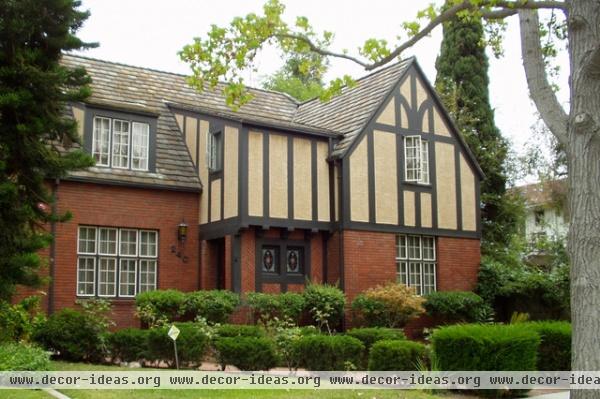
Though the style draws less attention now, its freely formed masses and mixtures of materials enchant; American Tudor homes are warm, inviting and charming. Infinite variations of these forms and materials allow an unusually complex mixture of elements under one style umbrella, as you'll see in this tour of examples from around the U.S.
Los Angeles. This intimately scaled and comfortable Los Angeles area house exhibits several key attributes common to American Tudors. The redbrick lower floor combines with a visually lighter second level half covered in false timber; stucco fills the voids.
Notice the complexity of the roofline. Steep gables combine in varying eave heights with a shed roof form over the centered entrance. A shed roof dormer aligns with the lower-level window group on the left. More interest occurs in the slight overhang above the entrance and the use of herringbone brickwork around the two stained glass windows.
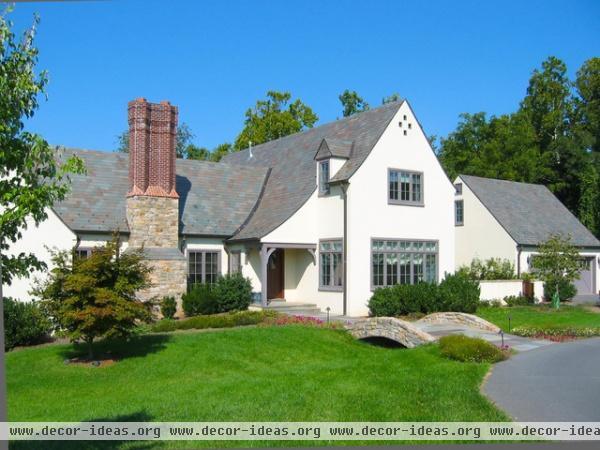
Washington, D.C. Several distinctive Tudor characteristics combine in this new D.C.-area home. Though it's labeled English cottage, the impressive stone and brick chimney illustrates a signature of many early grand Tudor examples.
Note how the stucco helps to emphasize the richness and complexity of the chimney and beautiful slate roof. A curved gable extending to form an entrance porch and a prominent forward-facing gable that's a story and a half signify the familiar Tudor form.
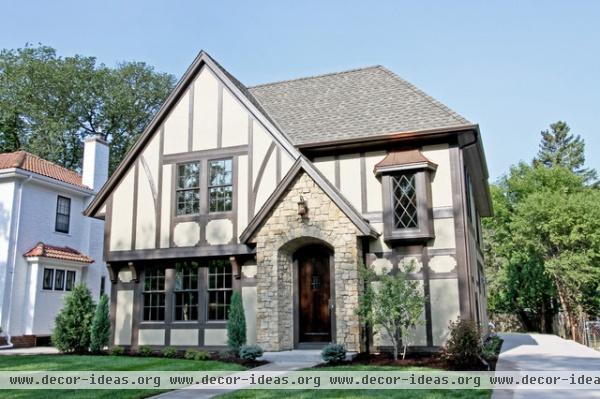
Minneapolis. This handsome Minneapolis house feels balanced and snug on its narrow lot. False half timber wraps the house, while the stone-detailed entrance provides an intimate welcome. Notice the slight overhang of the second floor and the oriel window to the right. These well-executed details validate its style. A hip roof, another variation on the theme, covers the primary body of the house.
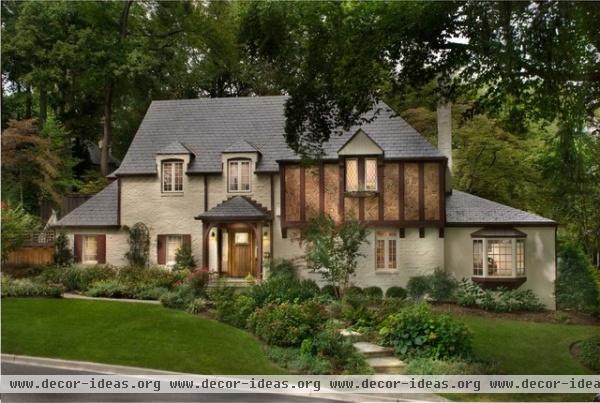
Washington, D.C. Variations of Tudor details distinguish this cozy D.C.-area example. Lacking the typical forward-facing gable, the hip roof helps to emphasize the splendid brick patterns set in half timber on the primary second-level elevation.
Notice also that it slightly overhangs the lower level, detailed with wood brackets. A neutral paint color and gray slate roof unify the variations in window shapes and sizes and dormer configurations.
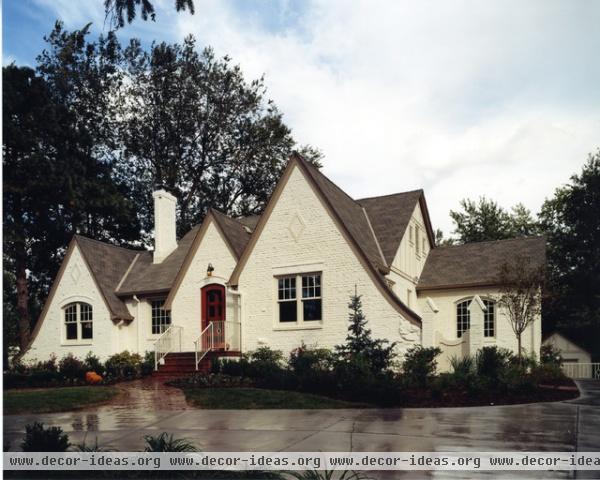
Omaha, Nebraska. The low-descending gable roof form on this Omaha residence is another uncommon and unique feature of the style. This play in roofline conveys intimacy in an otherwise tall and overpowering form. Many Tudors were designed like this, with a second level tucked under the primary side gable roof.
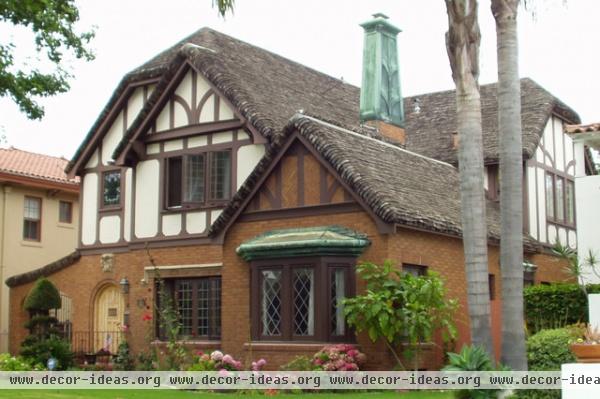
Los Angeles. This Los Angeles area house has a faux thatch roof variation; it's found in just a few American Tudor examples. Appearing complex, the shingles are simply rolled around to the fascia boards at the eaves, resulting in a softened profile.
This exquisitely detailed house contains many of the previously mentioned characteristics, and is distinguished further by copper finish details at the chimney and bay window. These types of houses are sometimes referred to as storybook, for their resemblance to illustrations found in early-20th-century children's books. Note the clipped gable at the highest ridge ends.
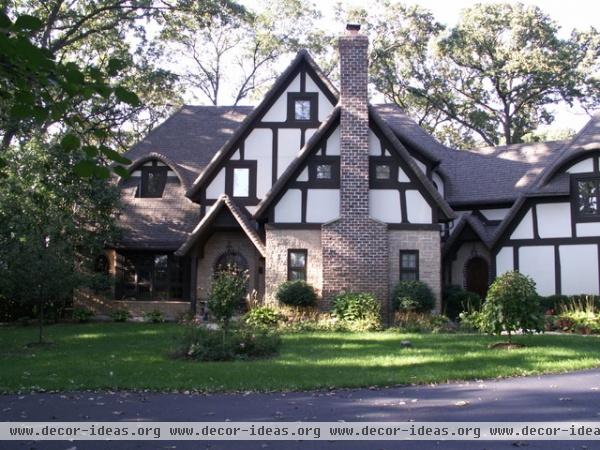
Chicago. With another thatched roof interpretation, this Chicago house rambles and is layered upon itself in an asymmetrical and whimsical fashion. Charming characteristics combine to present a complex elevation in a mixture of half timber, stucco, brick and stone. The gable and hip roof forms are cleverly accented with curved and shed dormers, and smaller gable entrance roofs.
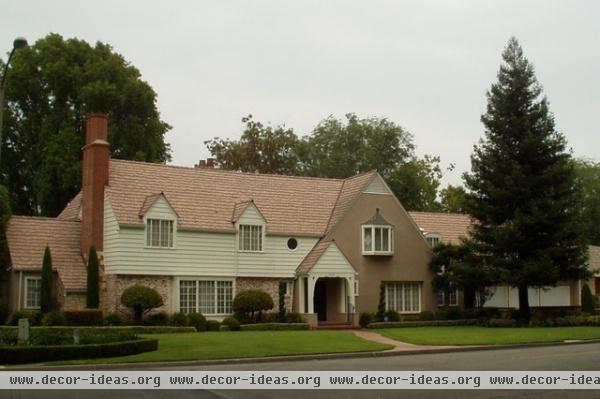
Long Beach, California. Notice the lack of half timber details here. Elegant layering of stone, brick, stucco and clapboard siding define specific portions of the facade. Even the brick of the chimney contrasts with the brick of the lower level. Significant and substantial examples of the late 1800s were often masonry structures. Advances in building techniques allowed the construction of brick veneer over a wood frame that's so typical of many 20th-century houses.
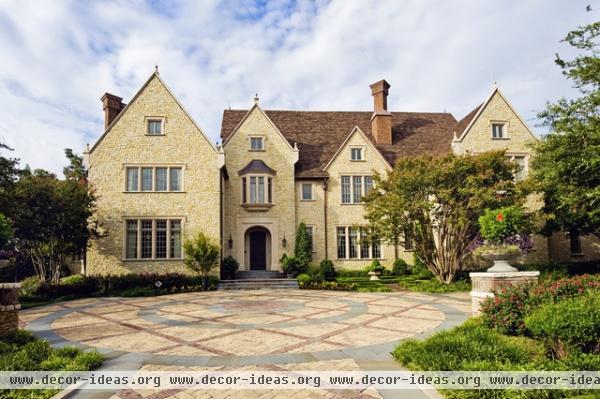
Dallas. This significant late-20th-century Dallas example alludes more specifically to the English Elizabethan and Jacobean periods that established English Tudor architecture. Several prominent forward-facing parapet gables (the roof finish abuts the higher-reaching gable wall) extend from the larger side gable form of the house. Renaissance-inspired details accentuate the windows and doors across the entire front elevation. Stone veneer covers the walls from foundation to peak, contrasting with detailed redbrick chimneys. Also notice the oriel window above the entrance and the division of windows by the cast stone, which are characteristics of higher-style examples past and present.
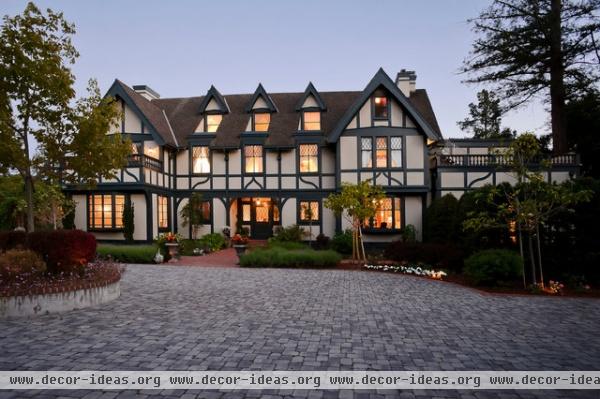
San Francisco Bay Area. Dominant half timbering defines this Northern California house. The nearly symmetrical front is unusual, though closer inspection reveals the symmetry lies in the center section. Inset gable dormers align with lower windows and doors and provide personality. Note the overhanging second levels, which provide cover for the bay windows on the two sides. Leaded glass details provide even more character.
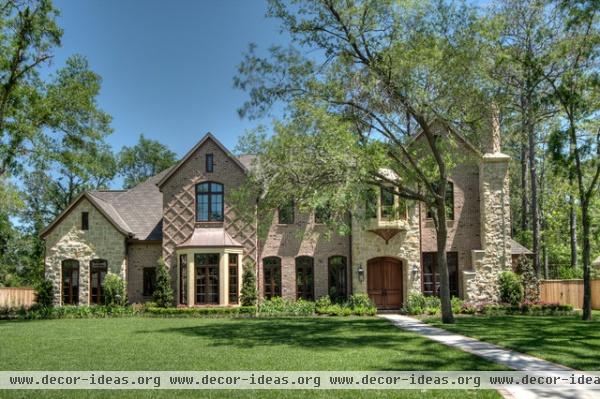
Houston. This newer Texas house clearly draws inspiration from original American Tudor style. A mix of stone, brick and brick patterns exuberantly adorns the front of this house. Notice the lack of half timber or other wooden details, which typically lighten the overall appearance.
Tudor remains an indelible American style, though its current popularity primarily resides with those wishing to restore early examples, or those with the means to custom build in a high-style fashion. Its attraction lies in the flexibility innate to the style and the intimate scale it achieves. Whether a modest cottage or a billionaire's mansion, the distinguished American Tudor makes a strong impression.
More photos: Browse more photos of Tudor-style homes












